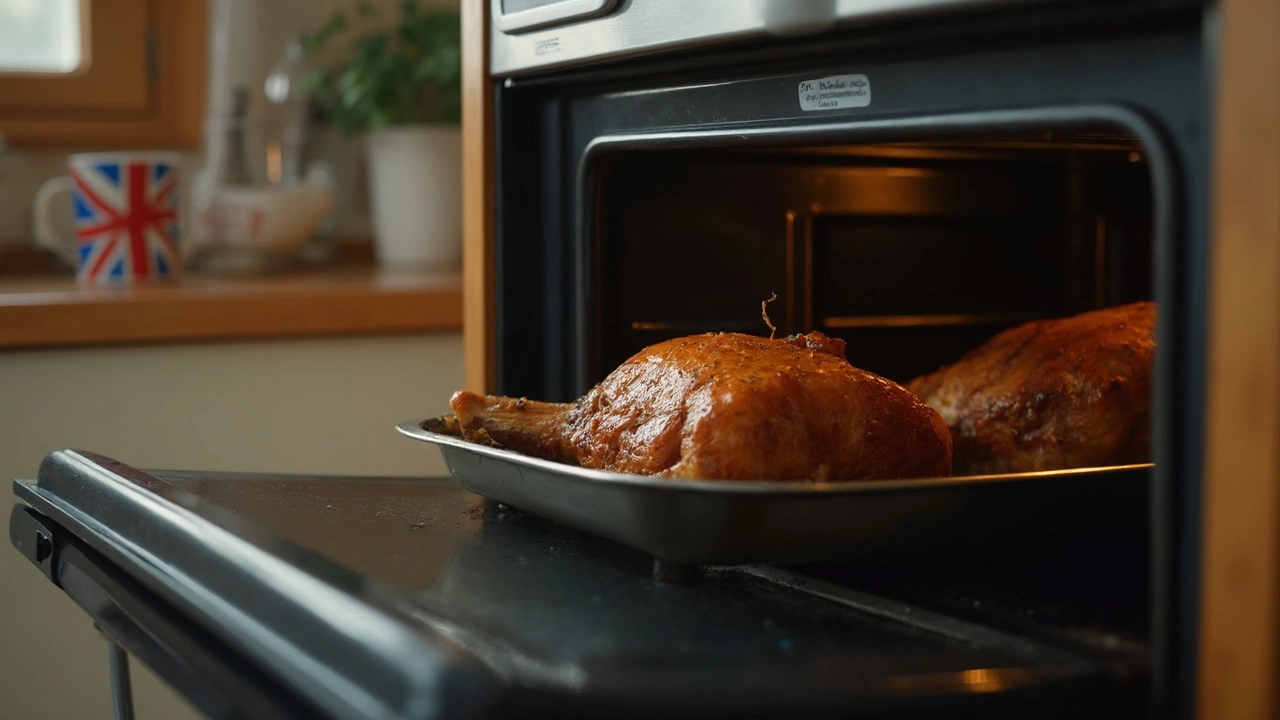When your electric oven acts up, mealtime gets stressful fast. One minute it’s your trusty pizza buddy, the next it’s burning everything or just refusing to heat. If you’re seeing weird oven behavior for the first time, it’s easy to blame yourself—forgetting to set the timer, maybe—but sometimes it’s the oven’s fault.
The first thing to watch for? If your food is taking way longer than usual to cook, or only one side gets toasty, that’s not normal. Ovens are supposed to keep steady, even heat. If you open the door and it’s cold inside or you see the broil element glowing but the bake element is totally dark, you’re not imagining things. That can mean a heating element is dead or there’s a wiring issue.
Another clear sign: unresponsive buttons or the display acting up. Maybe it flashes some weird error code you’ve never seen. Don’t just hope it clears up—these codes are actually the oven’s way of asking for help. And yes, hearing odd buzzing, popping, or clicking? Ovens aren’t supposed to be noisy. Unusual sounds usually mean something electrical is on its way out.
- Obvious Signs Your Oven Isn’t Right
- Weird Cooking Results
- Error Messages and Strange Sounds
- DIY Checks You Can Safely Try
- When to Call a Pro
- Tips So It Doesn’t Break Again
Obvious Signs Your Oven Isn’t Right
Sometimes, the signs your oven is on the fritz are right in front of you—you just have to notice them. Start with the most basic one: if the oven won’t turn on at all, that’s a pretty clear signal. No lights, no heat, nothing happening after you push the start button? You’ve got a problem to fix.
Hot spots and cold spots are another dead giveaway. If you put a tray of cookies in and half are burnt while the other half are pale, it’s not your recipe that’s broken—it’s probably the oven’s heating element slacking off. When you notice food cooking unevenly or way slower than usual, don’t just tweak the temp. That rarely solves it for long.
Another easy-to-spot clue is when the oven’s display panel starts acting odd. Flickering, weird symbols, or error codes (like F1, F2, or F9) aren’t just random—they usually point straight to something gone wrong inside, whether it’s with the sensors, wiring, or even the main control board.
If you see sparks inside the oven or smell something “electrical” (think burning rubber, plastic, or a harsh metallic scent), take it seriously. Stop using the oven and unplug it if you can. These smells often mean there’s a short circuit, and ignoring them can be risky.
- Check the oven door. If it won’t close tightly, heat escapes. That leads to lousy cooking results and can mess with the oven’s temperature sensors.
- Light bulbs or oven lights not working, even after changing them? Sometimes it’s a deeper electrical issue, not just a dead bulb.
- Extra loud fans or weird popping sounds when you turn the oven on—these aren’t normal. Fans are supposed to run quietly in the background. Noise changes are your oven’s version of a cry for help.
Bottom line: if your electric oven repair instincts are tingling, trust them. The most obvious problems are often the fastest to fix—if you catch them early.
Weird Cooking Results
If you’re finding your cakes are raw in the middle, or a frozen pizza comes out half-burnt, that’s a red flag. Electric ovens are meant to heat evenly, so when something’s way off, don’t just chalk it up to a bad recipe. Uneven cooking almost always points to broken or failing heating elements. The bake element (at the bottom) should glow red when in use—if it stays dark or only gets slightly warm, it’s not doing its job. Same goes for the broil element up top.
Sometimes the temperature is totally unpredictable. You set it for 375°F, but the food is barely warm or comes out way too crispy. This could be a busted temperature sensor or a thermostat that’s gone haywire. If you’ve checked your oven with a standalone oven thermometer and the numbers are all over the place, trust the gadget. Ovens don’t self-correct—if the readings are weird, the oven needs attention.
Don’t forget about preheating. A strong sign of trouble is when your oven takes forever to preheat, or even worse, never quite gets there. You should hear the relays click and see the preheat light or indicator turn off when it’s ready. If that never happens—yep, something’s not right inside the oven.
In some cases, the oven might start switching off randomly during a bake. That points to an electrical or control board issue. Don’t ignore it, or you’ll wind up with raw dinners and frustration. The bottom line: if your oven is turning out consistently weird cooking results, there’s a good chance you’re dealing with a electric oven repair situation.
- Foods consistently burned or undercooked
- One side of the oven is hotter than the other
- Oven can’t hit or hold the right temperature
- Bake or broil elements not glowing evenly
- Long or endless preheat times
No one wants to play guessing games with dinner. If you spot these problems, it’s time to dig deeper or get some help.
Error Messages and Strange Sounds
Electric ovens like to talk back these days, and usually it happens through the screen on the control panel. If your oven flashes an error code—like F1, F3, or E2—don’t just ignore it. Each code means something specific is wrong. For example, F1 often points to a control board problem, while F3 can mean there’s a faulty temperature sensor. Your oven's manual comes in handy here, since it will list what each error means. Lost the manual? No worries—you can search for your oven brand and model online with the error code to figure it out.
Now, about those weird sounds. An electric oven should hum softly when it’s running and maybe make a small click as the elements turn on or off. But loud buzzing, constant clicks, popping, or grinding? That’s a red flag. Popping noises sometimes happen if the element is cracked or there’s an electrical short. Buzzing might mean the relay or control board is struggling or something’s loose behind the panels. Constant clicking usually points to a bad relay or a faulty switch that's failing to stay open or closed.
If you’re hearing any of this and seeing error codes, don’t keep using the oven. Even if it mostly works, these symptoms often show something electrical is going wrong. Leaving it too long can make the repair harder—and pricier. For any error code or odd sound that doesn’t go away after a restart, you’ll want to call someone who knows electric oven repair before anything else blows.

DIY Checks You Can Safely Try
Before calling for help or writing off your oven, there are a few simple things you can check yourself. No fancy tools needed—just use your eyes, nose, and common sense. Here’s where to start with electric oven repair the smart way, without putting yourself at risk.
- Check the power: Make sure the oven’s plugged in tight. You’d be surprised how many times a bumped plug or a tripped breaker is the real culprit. Flip your kitchen breaker off and back on. If the oven comes back to life, the problem might be solved.
- Test heating elements: Set your oven to bake at 350°F and watch if both the bottom (bake) and top (broil) elements glow red after a couple minutes. If only one heat strip glows, or neither, there’s likely an issue with a specific element.
- Look at the oven door seal: If your door doesn’t close all the way, a torn or loose gasket lets out heat and messes up cooking. Close the door on a thin strip of paper—if you can pull it out easily, the seal’s no good.
- Control panel buttons: Try every button. If some just don’t work or the display flickers, take a photo and look for patterns. Write down any error codes you see—the manual (or a quick search) can tell you what they mean.
- Unusual smells and sounds: Turn the oven on empty for a few minutes. Smell burning plastic or see sparks? Turn it off right away. That’s a sign of electrical trouble you shouldn’t ignore.
To check for common problems, here’s a quick data table of what you might see and what it often means:
| Symptom | Likely Cause | What You Can Do |
|---|---|---|
| Oven won’t turn on | Tripped breaker or loose plug | Reset breaker, check plug |
| One element doesn’t heat | Burned out heating element | Element usually needs replacing |
| Door won’t seal | Worn or damaged gasket | Replace gasket |
| Error code on screen | Internal component issue | Look up code, restart oven |
| Noisy operation | Loose parts or wiring | Turn off power, get it checked |
Skip any steps that make you nervous or involve taking stuff apart. If in doubt, better safe than sorry—let a pro handle anything electrical inside the oven. But with these checks, you’ll know if it’s a quick fix or time for backup.
When to Call a Pro
Sometimes, no matter how much you poke and prod, your electric oven repair job just needs a professional. Attempting to fix certain things on your own is just asking for bigger trouble—or risking your safety. For example, if your oven is tripping breakers, giving off a burnt smell, or showing exposed wires, leave it alone and get someone qualified.
Certain oven headaches pretty much scream "call an expert":
- No power at all: If the oven won’t turn on and you already checked the breaker and outlet, the issue could be in the control board or wiring inside the oven.
- Electrical burning smell: This can hint at fried circuits or melting internal parts, which are fire hazards.
- Repeated error codes: If resetting the oven or power cycling it doesn’t clear the error, the electronics are probably shot.
- Broken door or hinges: Fixing springs, glass, or door sensors can get risky without the right tools.
- Sparks or popping sounds: This could mean major electrical faults inside, which need pro equipment to safely diagnose and repair.
Data from a 2024 appliance repair study showed that nearly 59% of electric oven breakdowns reported in North America needed a technician, with most repairs tied to electrical issues or internal part failures.
| Problem | DIY Safe? | Pro Needed? |
|---|---|---|
| Tripped breaker | Yes, check main panel | No, unless it happens again |
| Error codes | Check manual | Yes, if not solved fast |
| Heating element replacement | Sometimes | Yes, if unsure |
| Door won’t close | No | Yes |
| Strange smells/noises | No | Yes |
Look, there’s no shame in calling an appliance repair tech. Good ones know how to test for bad relays, fix wiring that’s hidden behind heavy panels, and order the right parts. You’ll probably get a warranty on the job, and it’s usually a safer bet than a DIY mishap. Plus, most oven issues cost less to fix than a whole new unit—average repair bills in 2024 landed well under $270 for most electric ovens, according to the National Appliance Service Association.
Tips So It Doesn’t Break Again
If you’ve already dealt with a busted oven once, you don’t want a repeat. Keeping up with a few simple habits can make a big difference in how long your oven lasts and how often you have to call in for electric oven repair. Most oven breakdowns happen because of small things over time, not some big dramatic failure.
- Clean it regularly, but go easy on the spray cleaners. Food gunk around the heating elements can burn and mess with the sensors. Avoid spraying liquids directly onto controls or inside the vent slots.
- Don’t slam the door. It wears out the hinges and can knock the door out of alignment, which then lets heat escape and makes your oven work harder than it should.
- Check the door seal. Run your fingers along the gasket every couple of months. If you feel cracks, gaps, or it’s coming loose, swap it out. A bad seal can make your oven cook unevenly and use more electricity.
- Don’t overload the oven. Cramming in too many pans blocks proper airflow. Heat can’t move right, which sometimes triggers error codes or burns out elements faster.
- Watch for power surges. If your area gets lots of sudden outages or spikes, plug the oven into a surge protector (if your model’s cord allows). Electrical jolts are a big reason for control board failures.
- Schedule a yearly checkup. Just like you take your car for oil changes, a quick pro look at your oven each year means problems get caught before they turn into emergencies.
Here's a quick table with some stats on what usually causes electric oven problems based on a 2023 U.S. appliance service survey:
| Common Cause | Percent of Oven Issues |
|---|---|
| Heating Element Wear | 37% |
| Door Seal Problems | 21% |
| Electrical/Control Board Fault | 19% |
| Blocked Vents/Airflow | 15% |
| User Error | 8% |
Paying attention to these small details makes a huge difference. It’s not just about saving money—it’s less disruption to your day (and less chance of explaining to a hungry kid like Piper why dinner’s another PB&J).





